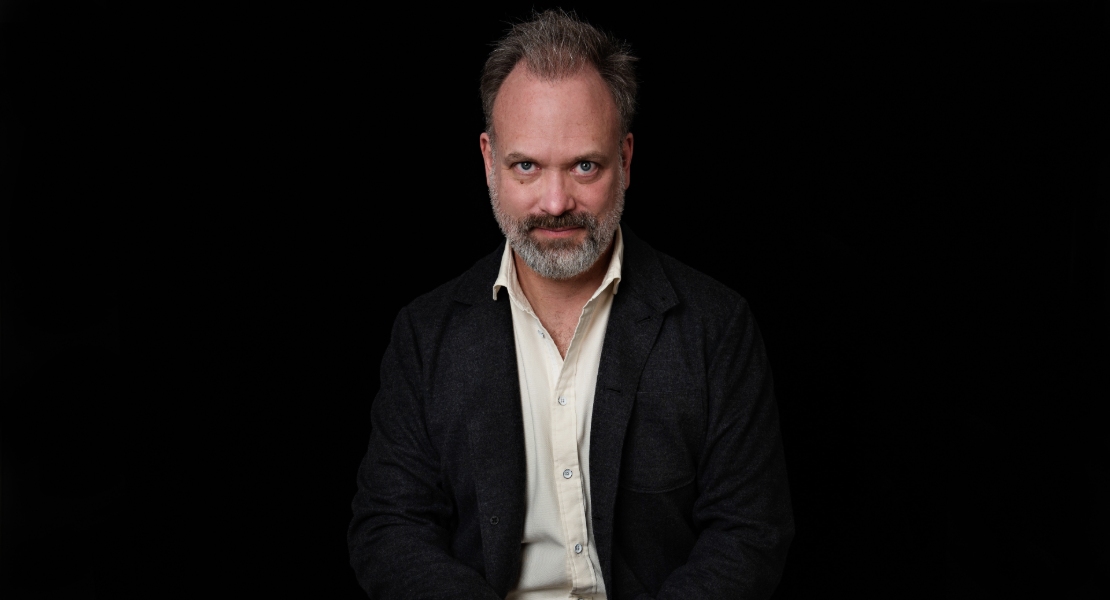The Orchestral Music of Joby Talbot

For the musical mind of Joby Talbot, the orchestra provides the perfect canvas. His music, often taking inspiration from the natural world, is marvellous in its imagination and reflective of a panoply of themes, realms, and moods. Talbot’s orchestral catalogue includes pieces that began life on stage in ballet as well as commissions from notable soloists, performing groups and festivals all around the world.
Sneaker Wave was inspired by the giant waves which appear off the west coast of the US, crashing unexpectedly on to the shore. These sneaker waves feed off the energy of smaller waves, gaining in size and momentum. The form of Talbot’s piece reflects this, gathering into a tidal surge over the course of its 15-minute duration. Meniscus was commissioned by the National Centre for the Performing Arts, Beijing, to mark World Environment Day and shares a similar ebb and flow, albeit with a more reflective quality – an opportunity perhaps to consider humankind’s relationship with water; our dependence on it and its ability to cause destruction.
In the bright concert opener Hovercraft (2004) we take to the waves, as Talbot recalls the childhood thrill of watching the vessels crossing the English Channel. The piece continues the tradition of music that celebrates pioneering technology, such as Michael Nyman’s MGV (Musique à Grande Vitesse) and Malcolm Arnold’s The Sound Barrier.
‘I well remember my family’s annual pilgrimage to Pegwell Bay in the 1970s to watch the hovercrafts come in from France; terrifying machines pounding across the ocean then remorselessly surging up the beach spouting great fountains of surf and with the noise of a thousand Lancaster bombers.’ - Joby Talbot
Hovercraft is one of a number of shorter pieces that were included in the score to Chroma, Talbot’s first collaboration with acclaimed choreographer Wayne McGregor, which was premiered by The Royal Ballet in 2006. The ballet opens arrestingly with the first of three arrangements of songs by The White Stripes - Aluminium, The Hardest Button to Button and Blue Orchid – thrillingly transposing the pounding, anarchic sound of Jack White’s band to an orchestral canvas and losing none of its energy. These are contrasted with three pieces of a more meditative quality - Cloudpark, A Yellow disc rising from the Sea and Transit of Venus – all originally composed during his time as Classic FM’s Composer in Residence and orchestrated here by long-time colleague Christopher Austin.
There is a rich tradition in classical music of works moving from the stage to the concert hall and Joby Talbot follows in the long line of composers much of whose music has its roots in dance. The Chamber Symphony of 2012 began life as the score for a ballet choreographed by Medhi Walerski for Netherlands Dance Theatre and Norwegian National Ballet. The four-movement, 30-minute piece sets out to find a sonic equivalent to the dancers’ physical virtuosity as they operate at the extremes of endurance. This is reflected in a propulsive work, rich in percussion and always moving forward, a sense of jeopardy never far from the surface.
Alice’s Adventures in Wonderland was first performed at Covent Garden in 2011. A collaboration with choreographer Christopher Wheeldon, the ballet has gone on to become Talbot’s most successful work and continues to be performed around the globe. Lasting around 40 minutes, his Alice’s Adventures in Wonderland: Suite introduces concert audiences to Lewis Carroll’s most familiar characters, among them the Mad Hatter, the Cheshire Cat, the Queen of Hearts and of course Alice herself, capturing their quirks and eccentricities with wit and charm.
Joby Talbot's Alice ballet score stands in the line of Prokofiev's Cinderella: tuneful strongly characterised with glittering orchestral colouring. – BBC Music Magazine
The guitar concerto Ink Dark Moon was written for Miloš Karadaglic and first performed at the BBC Proms in 2018. Inspired by the intimate quality of the solo instrument, the piece is amongst Talbot’s most introspective orchestral works. The title is taken from an anthology of ancient Japanese poetry translated by Jane Hirshfield. The composer describes the piece as being ‘like an extended, night-time love letter, redolent with possibilities.’
Talbot’s trumpet concerto Desolation Wilderness was composed for Alison Balsom in 2006. Like Sneaker Wave, this three-movement work is inspired by his travels on the west coast of America – in this case the high Sierra Nevada in Northern California. ‘I was struck by the strange and disarming contrast between the bright sunshine, perfect blue sky, and warm mountain air of the sierran autumn; and the occasional icy chill – sudden drops of temperature when the sun vanished behind the mountains,’ says the composer, whose piece extreme lyricism with dazzling virtuosity.
No survey of Joby Talbot’s orchestral music would be complete without mention of his Chacony in G minor, a re-working of Henry Purcell’s 17th century masterpiece. Beginning austerely, as in reverence to his musical forebear, Talbot leads Purcell’s theme around the orchestra rising to a grand climax of 21st century orchestral colour before returning to hushed strings and silence.
(March 2022)
